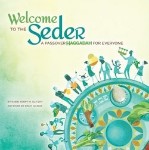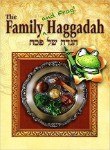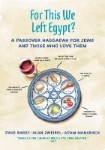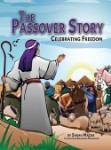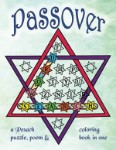Review: Spiritual Kneading through the Jewish Months by Dahlia Abraham-Klein
Buy this book at Amazon
Being a man I was not the primary target audience of the book, which bears the subtitle: “Building the Sacred through Challah“. But if Arthur Kurzweil could write a glowing forward for it, who am I to exclude myself from reading it? The introduction explains the connection between the feminine, challah making and Rosh Chodesh as a practice for women. Having gained the necessary understanding in this regard the rest of the book can be appreciated by people of any gender. Yes, Rosh Chodesh is special for women, but the book can be used as a workbook by anyone. The challah recipes, the reflective questions, the Kavanah notes — that each major chapter has — will help you no matter what stage/level you are at in your cooking, (self-)knowledge and prayer practices.
In the debate between the comparative values of printed books and their electronic counterparts a key argument for the former is often how holding, smelling, and paging through book feels. I emphasize with boths sides of this debate, but when I can hold such a beautifully produced book as Spiritual Kneading through the Jewish Months by Dahlia Abraham-Klein I am definitely in the former camp. The first thing I do when I get a new book, after checking the cover, spine and back, is running through the pages to get a feel for the whole tome. Right at that moment I noticed and started to enjoy the color-coordination. As you would expect from a book with “months” in the title the bulk is made up by the chapters, corresponding to the 12 (+1) months of the Hebrew calendar. (The +1 is the second Adar, which is added in some years so the Hebrew lunar calendar wouldn’t be off-sync too much from the solar-based year and calendars.) What I didn’t expect was that the titles of each month would be printed in different color and they go through the spectrum, forming a spectacular rainbow. You can see these soft colors not just in the table of contents, but in the titles and subheadings of each chapter too. It may be a simple pleasure, but this element cheered me up and made me appreciate the book, even before I started to read it.
One of my favorite kind of books is one that combines academic accuracy with spiritual inquisitiveness. This book managed to do both and more. On one hand it contains plenty of references to Torah, Talmud and other sources of Jewish tradition, so the curious like me can follow up and learn more about specific aspects. These are included in the style and spirit of scholarly publications (along with proper citation and footnotes), which is so rare in popular books that it deserves all the respect. On the other hand it goes beyond explaining the tradition and its origins: it connects the ancient texts with the spiritual and turns them into living, breathing, approaches that anyone can make her or his own. And the “more” I referred to above? The physical realms are weaved into it like braids of a challah. The recipes, the tactical experience of creating food, rich in symbols, that nourishes the spirit, the minutiae of the process that connects people and the Divine adds that special dimension to the book. I never read a book before integrating three different type of content so seamlessly: academic, spiritual and practical.
And if all of this is not enough the book ends with additional Challah recipes of these kind: egg, basic with fresh yeast, spelt, whole-wheat, gluten-free, spiral and single/two/four/six/ strand challah.
Links of interest
- The book’s home page at the publisher’s site
- The author’s website/blog
- Booklaunch website
- Reviews: Jewish Book Council, Jewish Women’s Archive, Kosher Everyday, My Kosher Salt, Orthodox Union, The Weiser Kitchen,
- 90 minute interview video/book trailer
Disclaimer: I have received a copy from the author for this review.

